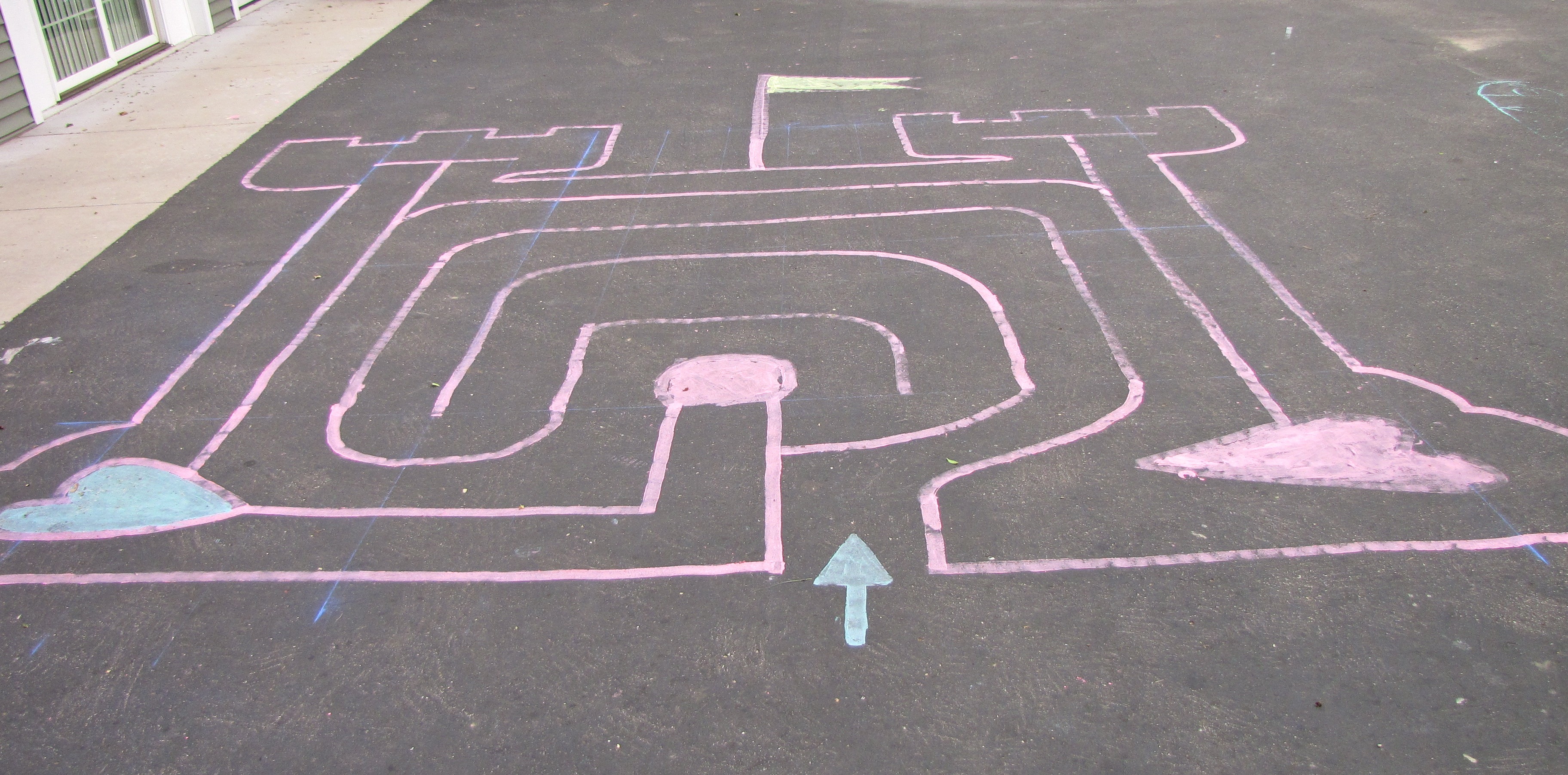What's the difference between a labyrinth vs a maze?
Both labyrinths and mazes have been physically made and used for centuries. The difference is that mazes include dead ends and require switchbacks or back tracking. Labyrinths are one continuous path with no dead ends. You may see corn field mazes or scary mazes around Halloween. They are meant to confuse and challenge. The same is true with mazes on paper. They may be simple or complex, but are designed to include dead ends.
When you see hedges or shrubs designed with walking paths, these are usually labyrinths. They frequently are included in elaborate gardens, especially with older mansions. They are meant for personal reflection. You walk them slowly, while thinking. Hopefully, by the time you are done, you have resolved your issues and calmed your thoughts.
Why build a labyrinth in schools? Why Not!
They can be elaborate or simple. Temporary or permanent. The purpose is self calming and reflection. Sometimes a few minutes quietly walking the path is the sensory break needed. Not all sensory diets need physical exertion.
Explain to students that talking is discouraged because it interrupts "quiet thinking". Save thoughts for after the walk - then remember to make time to share and discuss quietly.
This large one is made from stones. Try a simple one using bean bags or gym cones.
Students can take turns walking the path, or slowly follow each other- but no rushing, crowding or touching, just thinking! repeat as needed.
Use masking or painter's tape - Try to get volunteers to help create it. Maybe older grades can make it for use by younger students.
Make a small one in the the corner of your room. Then ask students to use it as a transition between specials or back to class.
Once you find a size and design that works for your setting, ask if the PTA or other volunteers can paint it on the playground for any student to use at recess or before school begins in the morning. Can't we all could use some "quiet thinking time?
This week's special: Shipping and more! |
Topics
Bilateral motor coordination
ball skills
calming
cooperative games
crossing midline
cutting
dyspraxia
fine motor coordination
gross motor
group activities
handwriting
in-hand manipulation
inside activities
messy play
motor planning
obstacle course
pencil use
preschool
recess
sensory
sensory processing
shoetying
story starters
strengthening
tactile
upper body strength
vestibular; balance
visual motor skills
writing



